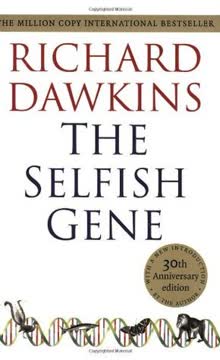つの重要なポイント
1. 地理的要因が人間社会の不平等な発展を形作った
「歴史は異なる環境の違いによって異なる道をたどったのであり、人々自身の生物学的な違いによるものではない。」
環境決定論。 本書は、人間社会の発展速度の大きな違いは、主に地理的および環境的要因によるものであり、人口間の生来の違いによるものではないと主張している。これらの要因には以下が含まれる:
- 家畜化可能な植物と動物の存在
- 大陸の形状と方向(東西軸 vs. 南北軸)
- アイデアや技術の拡散を妨げる障壁(砂漠、山脈、海洋)
- 農業と人口増加に適した気候と生態系
これらの地理的な利点や不利点が社会を異なる軌道に乗せ、技術、政治組織、経済力の格差を生み出し、今日まで続いている。
2. 食料生産が複雑な文明の触媒となった
「食料生産の採用は、自己触媒プロセスと呼ばれるものの一例であり、一度始まるとますます速く進む正のフィードバックサイクルである。」
農業革命。 狩猟採集から農業と家畜飼育による食料生産への移行は、人類史における重要な転換点であった。この変化により以下が可能となった:
- 人口の増加と密集化
- 労働の専門化
- 技術と工芸の発展
- 社会階層と複雑な政治構造の出現
食料生産は食料の余剰を生み出し、それがより大きな人口と職人、兵士、支配者などの非食料生産専門家を支えることができた。この正のフィードバックループが社会の発展を加速させ、初期の文明の興隆をもたらした。
3. 植物と動物の家畜化が社会の進歩を促進した
「すべての作物は野生植物種から生じた。どのようにして特定の野生植物が作物に変わったのか?」
人間と家畜の共進化。 家畜化のプロセスは、しばしば無意識のうちに人間に有益な特性を持つ野生種を選択する長期的なものであった。主なポイントは以下の通り:
-
家畜化は世界のいくつかの地域で独立して発生した
-
一部の地域は家畜化に適した野生種が他よりも多かった
-
動物の家畜化は食料、労働、輸送、肥料を提供した
-
植物の家畜化は信頼できる食料源と余剰をもたらした
-
主要な家畜化種:
-
作物:小麦、米、トウモロコシ、ジャガイモ
-
動物:羊、ヤギ、牛、豚、馬
ユーラシアにおける家畜化可能な種の存在は、そこに住む社会に複雑な文明を発展させるための大きな先行利点を与えた。
4. ユーラシアの東西軸が技術の拡散を促進した
「ユーラシアの東西軸は、これらの中国の動物や作物が古代に西方に広がることを可能にし、西アジアの家畜も東方に中国に広がった。」
大陸の方向性の重要性。 ユーラシアの主に東西軸は、同じ緯度と気候の間で作物、動物、技術の拡散を容易にした。この拡散は以下の理由で重要であった:
- 一つの緯度に適応した植物や動物は、しばしば同じ緯度で繁栄することができた
- 技術やアイデアは、同じような課題に直面する社会間でより容易に広がることができた
- 連続した陸地は貿易と文化交流を促進した
対照的に、アメリカ大陸やアフリカの南北軸は拡散の障壁を作り、作物や動物が広がる際に新しい気候に適応する必要があった。この大陸の方向性の違いが、ユーラシアの技術的および社会的発展の速さに寄与した。
5. 銃、病原菌、鉄がユーラシア人に征服の優位性を与えた
「異なる人々の間の相互作用の歴史が、征服、疫病、虐殺を通じて現代世界を形作った。」
征服の直接的な原因。 ユーラシアの食料生産と技術発展の先行利点は、他の社会との遭遇において三つの主要な優位性をもたらした:
- 銃:優れた武器と軍事技術
- 病原菌:他の人口を壊滅させた病気に対する免疫
- 鉄:高度な冶金技術と道具
これらの優位性は生来の優越性によるものではなく、密集した人口、動物の家畜化、技術交換の長い歴史の結果であった。これらの要因の組み合わせが、ユーラシア人が征服と植民地化を通じて世界の多くを支配することを可能にした。
6. 文字体系は経済的および政治的ニーズから進化した
「文字は武器、微生物、中央集権的な政治組織とともに、征服の現代的な手段として進行した。」
識字能力としての力。 文字体系の発展は、複雑な社会のニーズと密接に関連していた:
- 貿易と課税のための記録保持
- 法律や宗教文書の成文化
- 長距離通信
文字体系は通常以下のように進化した:
- 絵文字(物体を表す)
- 表語文字(単語や概念を表す)
- 音節文字(音節を表す)
- アルファベット(個々の音を表す)
文字の普及は、しばしば征服や貿易を通じて、社会間の知識と技術の拡散をさらに加速させた。
7. 社会の複雑さは競争と革新を通じて増加した
「これらのポリネシア社会の違いは、わずか3,200年の間に、同じ祖先文化を持つ人口に対する異なる環境と創設者効果の結果として発展した。」
社会の分岐進化。 人間の人口が広がり、多様な環境に定住するにつれて、異なる社会構造と技術が発展した:
- 首長制や国家がより単純な部族組織から出現した
- 労働の専門化が技術革新をもたらした
- 社会間の競争がさらなる進歩を促進した
このプロセスは一様ではなく、共通の祖先文化から発展したポリネシア社会の多様な結果によって示されている。環境の制約、人口規模、孤立が、社会が達成できる複雑さのレベルを決定する役割を果たした。
8. 環境の違いが多様な発展の道をもたらした
「歴史の広範なパターンは、異なる大陸の人々の長期的な歴史の違いである。」
生態学的決定論。 本書は、環境要因が異なる社会の軌跡を大きく決定したと主張している:
- 肥沃な川の谷は初期の農業を支えた(例:メソポタミア、ナイル、インダス)
- 島嶼社会は海洋技術を発展させた(例:ポリネシア)
- 過酷な環境は人口増加と技術発展を制限した(例:オーストラリア)
これらの環境の違いが以下をもたらした:
- 人口増加の速度の違い
- 社会の複雑さのレベルの違い
- 技術発展の不均衡
- 多様な文化的慣習と信念
環境と人間社会の相互作用が、歴史を通じて観察される多様な文化と文明のタペストリーを作り出した。
9. 孤立と人口規模が技術進歩に影響を与えた
「要するに、中国の歴史は東アジア全体の歴史の鍵を提供する。」
革新の要因。 本書は、社会の技術進歩の速度を決定する二つの重要な要因を特定している:
- 人口規模:大きな人口はより多くの潜在的な発明者と革新を生み出す
- 接続性:外部との接触が多い社会は技術を借用し適応することができる
中国の大きな人口と相対的な接続性は、早期の革新の中心地となることを可能にした。しかし、孤立の時期は停滞をもたらした。対照的に、タスマニアのような小さく孤立した社会は、時間とともに技術を失った。
- 革新を促進する要因:
- 密集した人口
- 貿易ネットワーク
- 社会間の競争
- 新しいアイデアに対する文化的開放性
これらの要因の相互作用が、一部の社会が技術的リーダーとなり、他の社会が遅れを取り、あるいは退行する理由を説明している。
最終更新日:
FAQ
What's Guns, Germs, and Steel about?
- Explaining disparities: The book explores why different human societies developed at different rates, focusing on environmental, geographic, and biological factors rather than racial differences.
- Yali's question: The narrative is driven by a question from a New Guinean politician, Yali, about why Europeans had more material wealth ("cargo") than New Guineans.
- Interdisciplinary approach: Jared Diamond integrates insights from anthropology, biology, and history to provide a comprehensive understanding of human societal development.
Why should I read Guns, Germs, and Steel?
- Groundbreaking perspective: The book offers a non-racist explanation for inequalities in human societies, challenging traditional narratives of inherent superiority.
- Engaging storytelling: Diamond presents complex ideas in an accessible manner, making it a compelling read for those interested in history, sociology, or human evolution.
- Relevance to modern issues: Understanding historical roots of societal disparities can provide insights into contemporary global inequalities and conflicts.
What are the key takeaways of Guns, Germs, and Steel?
- Geography shapes history: Geographic factors significantly influenced the development of agriculture, technology, and political organization across continents.
- Food production's impact: The transition from hunting-gathering to food production enabled societies to support larger populations and complex political structures.
- Role of germs and technology: Infectious diseases and technological advancements, particularly in weaponry, played pivotal roles in European conquests over other societies.
How does Jared Diamond address Yali's question in Guns, Germs, and Steel?
- Geographic advantages: Societies with favorable geographic conditions, like the Fertile Crescent, had access to more domesticable species, leading to earlier agricultural development.
- Cultural diffusion: The east-west axis of Eurasia allowed for rapid diffusion of technology and ideas, unlike the north-south axes of Africa and the Americas.
- Historical context: Diamond provides a framework to understand how geographic and environmental factors shaped the fates of different societies over time.
How does Guns, Germs, and Steel explain the rise of agriculture?
- Environmental factors: Certain regions, like the Fertile Crescent, had the right conditions for early agriculture, including suitable wild plants and animals for domestication.
- Food surplus and complexity: Agriculture led to food surpluses, allowing populations to grow and societies to become more complex with specialized roles and trade.
- Cultural evolution: The transition to agriculture was a gradual process influenced by resource availability and the need for stability.
What role do germs play in Guns, Germs, and Steel?
- Infectious diseases as weapons: Germs, particularly those from densely populated agricultural societies, decimated indigenous populations upon contact with Europeans.
- Immunity disparities: Societies with a long history of agriculture developed immunities to certain diseases, giving them an advantage over less exposed populations.
- Historical consequences: Diseases like smallpox significantly altered history, facilitating European conquests and colonization efforts.
How does Jared Diamond address the concept of race in Guns, Germs, and Steel?
- Rejecting biological determinism: Diamond argues against racial differences as explanations for societal success, emphasizing environmental and geographic factors instead.
- Cultural evolution over time: All humans share a common ancestry, and cultural practices, rather than inherent traits, shape societal outcomes.
- Focus on ultimate causes: Diamond encourages looking for deeper explanations for historical disparities, moving beyond superficial racial theories.
What is the significance of the title Guns, Germs, and Steel?
- Symbolizing power dynamics: The title reflects the three main factors contributing to the dominance of certain societies: military technology (guns), infectious diseases (germs), and industry/agriculture (steel).
- Interconnectedness of factors: Each element in the title is linked, illustrating how they collectively shaped human history.
- Framework for understanding history: The title serves as a lens to analyze historical events and societal developments, emphasizing environmental and technological influences.
How does Guns, Germs, and Steel explain the differences in societal development?
- Environmental factors matter: Geographic conditions, such as climate and resources, led to different development rates. Eurasia had more domesticable plants and animals, facilitating growth.
- Domestication and population growth: Societies that domesticated plants and animals could support larger populations, allowing for complex social structures and technological advancements.
- Germs and conquests: Diseases from domesticated animals decimated populations during conquests, giving immune societies a significant advantage.
What are the best quotes from Guns, Germs, and Steel and what do they mean?
- “History followed different courses...”: This quote encapsulates the book's thesis that environmental factors, not racial superiority, explain historical disparities.
- “The question, ‘Why did human societies...’”: Diamond critiques traditional explanations for societal differences, advocating for a scientific understanding of history.
- “Food production was indirectly a prerequisite...”: Highlights the interconnectedness of agriculture and technological advancement, suggesting farming societies were better positioned for future developments.
How does Guns, Germs, and Steel relate to modern global issues?
- Understanding inequality: Provides historical context for contemporary disparities in wealth and power, encouraging consideration of long-term effects of historical developments.
- Lessons for future interactions: Examining the past offers insights into fostering cooperation and understanding in a globalized world.
- Relevance to current conflicts: Themes of conquest, colonization, and cultural exchange resonate with ongoing global tensions and colonial legacies.
How does Guns, Germs, and Steel explain the spread of technology?
- Geographic diffusion: Technology spreads more easily along east-west axes, as seen in Eurasia, facilitated by similar climates and day lengths.
- Cultural exchange: Trade and conquest played roles in technology spread; interacting societies were more likely to adopt and adapt new technologies.
- Population density: Higher densities led to more innovation and advancement; larger populations had more inventors and competition, driving progress.
レビュー
本書『銃・病原菌・鉄』は、なぜある社会が他の社会よりも早く発展したのかを探求し、その違いを人種的優越性ではなく、地理的および環境的要因に帰している。ダイアモンドは、ユーラシア文明が有利な植物と動物の家畜化の機会から恩恵を受け、技術的進歩を遂げたと主張している。思考を刺激するアイデアと広範な研究で称賛される一方で、ダイアモンドの決定論的アプローチや文化的要因への注意不足を批判するレビューもある。本書の読みやすい文体と学際的なアプローチは、人類の歴史と発展に興味を持つ読者にとって魅力的なものとなっている。



















